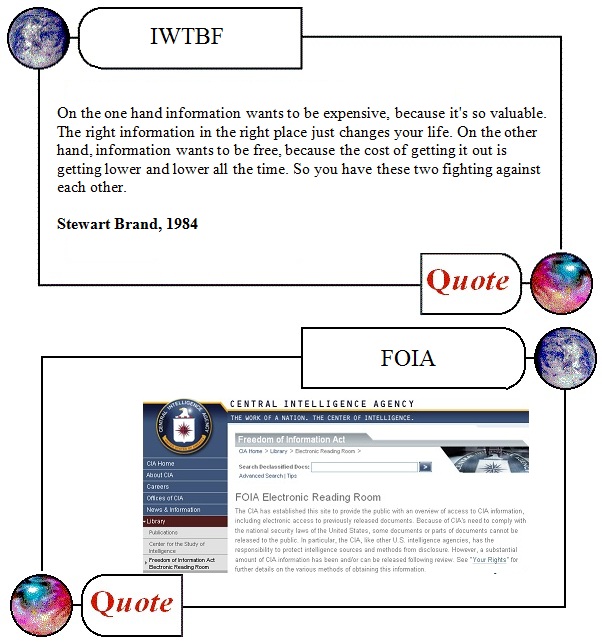R2P is the New COIN
Monday, September 19th, 2011Introduction:
The weirdly astrategic NATO campaign in Libya intervening on the side of ill-defined rebels against the tyrannical rule of Libyan strongman Colonel Moammar Gaddafi brought to general public attention the idea of “Responsibility to Protect” as a putative doctrine for US foreign policy and an alleged aspect of international law. The most vocal public face of R2P, an idea that has floated among liberal internationalist IL academics and NGO activists since the 90’s, was Anne-Marie Slaughter, former Policy Planning Director of the US State Department and an advisor to the Obama administration. Slaughter, writing in The Atlantic, was a passionate advocate of R2P as a “redefinition of sovereignty” and debated her position and underlying IR theory assumptions with critics such as Dan Drezner, Joshua Foust, and Dan Trombly.
a “redefinition of sovereignty” and debated her position and underlying IR theory assumptions with critics such as Dan Drezner, Joshua Foust, and Dan Trombly.
In all candor, I found Dr. Slaughter’s thesis to be deeply troubling but the debate itself was insightful and stimulating and Slaughter is to be commended for responding at length to the arguments of her critics. Hopefully, there will be greater and wider debate in the future because, in it’s current policy trajectory, R2P is going to become “the new COIN”.
This is not to say that R2P is a military doctrine, but like the rise of pop-centric COIN, it will be an electrifying idea that has the potential fire the imagination of foreign policy intellectuals, make careers for it’s bureaucratic enthusiasts and act as a substitute for the absence of a coherent American grand strategy. The proponents of R2P (R2Peons?) appear to be in the early stages of following a policy advocacy template set down by the COINdinistas, but their ambitions appear to be far, far greater in scope.
It must be said, that unlike R2P, an abstract theory literally going abroad in search of monsters to destroy, COIN was an adaptive operational and policy response to a very real geopolitical debacle in Iraq, in which the United States was already deeply entrenched. A bevy of military officers, academics, think tank intellectuals, journalists and bloggers – some of them genuinely brilliant – including John Nagl, Kalev Sepp, Con Crane, Jack Keane, David Petraeus, Michèle Flournoy, David Kilcullen, Fred and Kim Kagan, James Mattis, Montgomery McFate, Thomas Ricks, Andrew Exum, the Small Wars Journal and others articulated, proselytized, reported, blogged and institutionalized a version of counterinsurgency warfare now known as “Pop-centric COIN“, selling it to a very reluctant Bush administration, the US Army and USMC, moderate Congressional Democrats and ultimately to President Barack Obama.
The COIN revival and veneration of counterinsurgent icons like Templer and Galula did not really amount a “strategy”; it was an operational methodology that would reduce friction with Iraqis by co-opting local leaders and, for the Bush administration, provide an absolutely critical political “breathing space” with the American public to reinvent an occupation of Iraq that had descended into Hell. For US commanders in Iraq, adopting COIN doctrine provided “the cover” to ally with the conservative and nationalistic Sunni tribes of the “Anbar Awakening” who had turned violently against al Qaida and foreign Salafist extremists. COIN was not even a good theoretical model for insurgency in the 21st century, never mind a strategy, but adoption of COIN doctrine as an American political process helped, along with the operational benefits, to avert an outright defeat in Iraq. COIN salvaged the American political will to prosecute the war in Iraq to a tolerable conclusion; meaning that COIN, while imperfect, was “good enough”, which in matters of warfare, suffices.
During this period of time and afterward, a fierce COINdinista vs. COINtra debate unfolded, which I will not summarize here, except to mention that one COINtra point was that COINdinistas, especially those in uniform, were engaged in making, or at least advocating policy. For the military officers among the COINdinistas, this was a charge that stung, largely because it was true. Hurt feelings or no, key COINdinistas dispersed from Leavenworth, CENTCOM and military service to occupy important posts in Washington, to write influential books, op-eds and blogs and establish a think tank “home base” in CNAS. Incidentally, I mean this descriptively and not perjoratively; it is simply what happened in the past five years. The COINDinistas are no longer “insurgents” but are the “establishment”.
R2P is following the same COIN pattern of bureaucratic-political proselytization with the accomplished academic theorist Anne-Marie Slaughter as the “Kilcullen of R2P”. As with David Kilcullen’s theory of insurgency, Slaughter’s ideas about sovereignty and R2P, which have gained traction with the Obama administration and in Europe as premises for policy, need to be taken seriously and examined in depth lest we wake up a decade hence with buyer’s remorse. R2P is not simply a cynical fig leaf for great power intervention in the affairs of failed states and mad dictatorships like Gaddafi’s Libya, R2P is also meant to transform the internal character of great powers that invoke it into something else. That may be the most important aspect and primary purpose of the doctrine and the implications are absolutely profound.
Therefore, I am going to devote a series of posts to analyzing the journal article recommended by Dr. Slaughter, “Sovereignty and Power in a Networked World Order“, which gives a more robust and precise explanation of her ideas regarding international relations, sovereignty, legitimacy, authority and power at greater length than is possible in her op-eds or Atlantic blog. I strongly recommend that you read it and draw your own conclusions, Slaughter’s argument is, after all, about your future.
ADDENDUM – Related Posts:
Slouching Toward Columbia – Guest post: Civilian Protection Policy, R2P, and the Way Forward
Phronesisaical –Dragging History into R2P
Dart-Throwing Chimp – R2P Is Not the New COIN
Committee of Public Safety –With Outstretched Arm | The Committee of Public Safety





